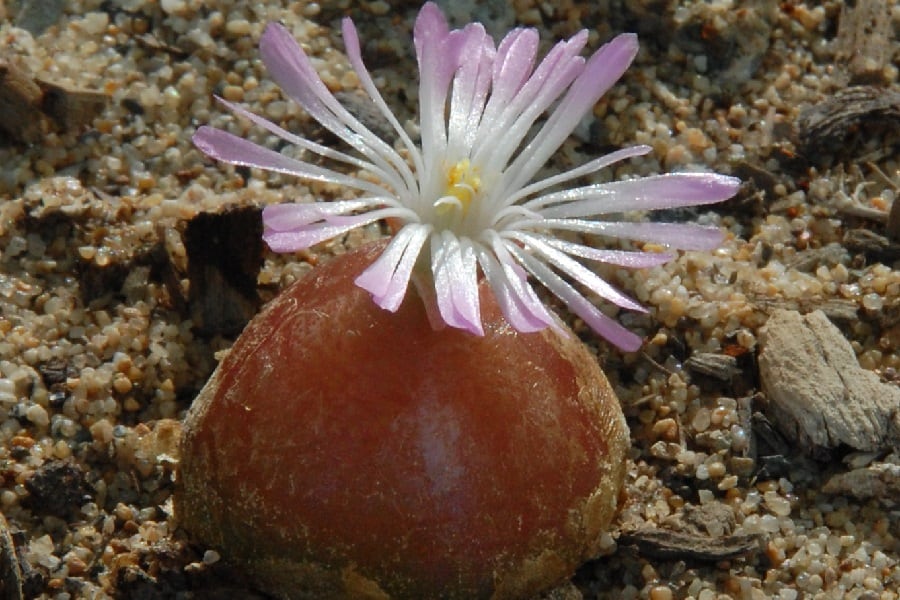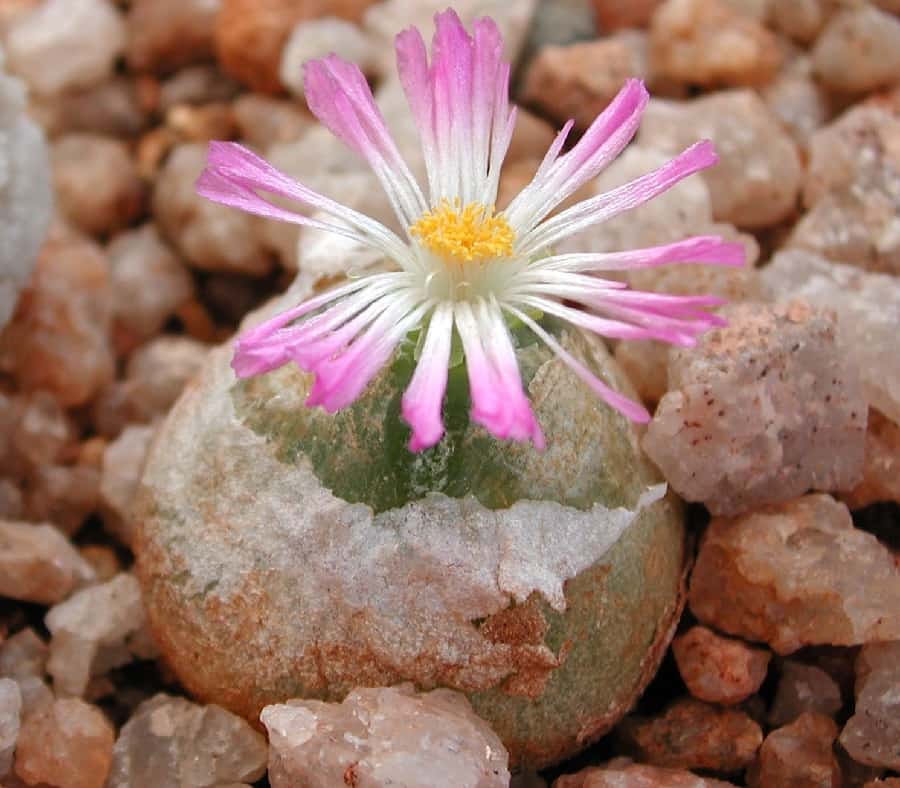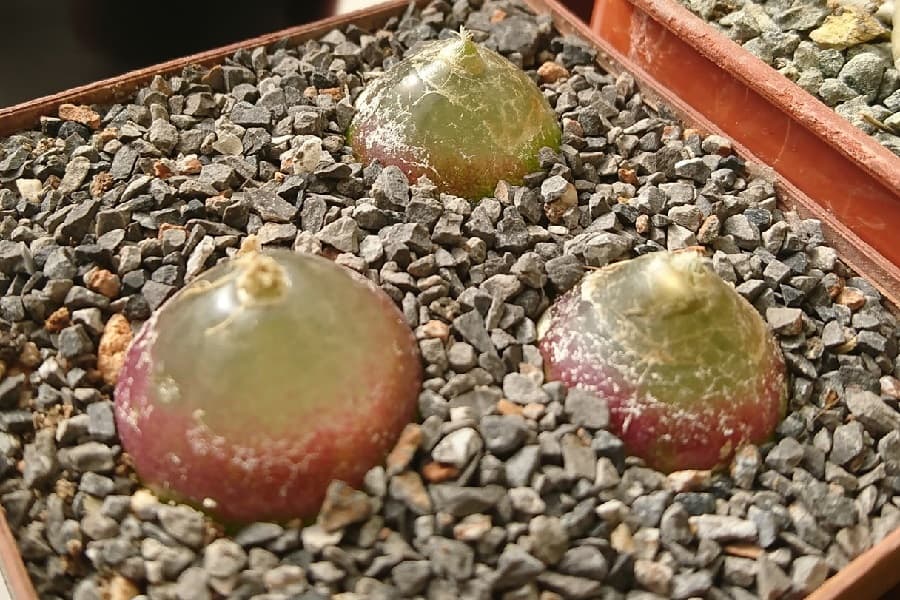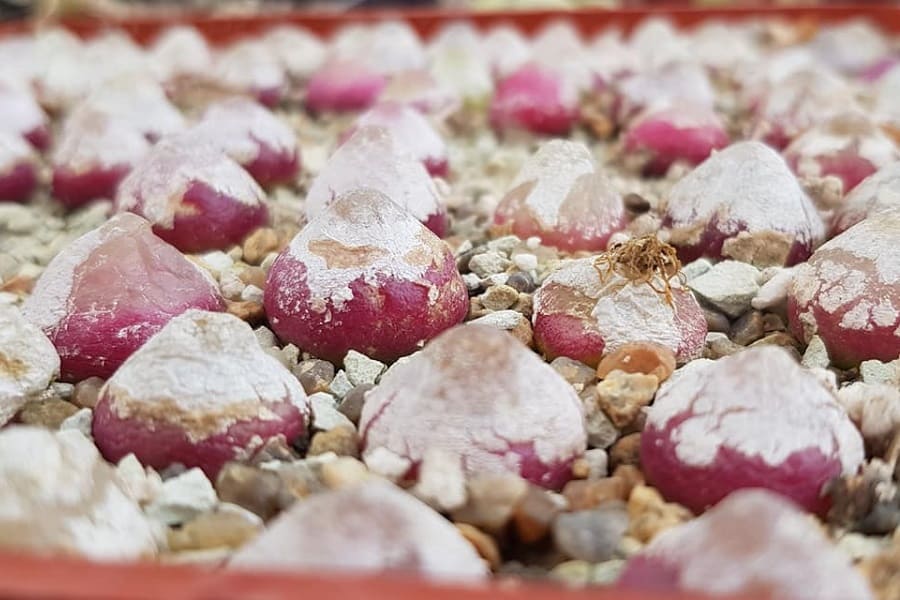Conophytum burgeri: The Plant That Looks Like It’s From Another Planet
Imagine a strange, alien-like plant that appears to have landed straight from Mars. With its peculiar strawberry onion shape and vibrant ruby red color, Conophytum burgeri is truly out of this world! This bizarre-looking succulent will stop you in your tracks and leave you utterly mesmerized. If you’re a plant enthusiast seeking something extraordinary, read on to uncover the mysteries of this interstellar wonder.

Contents
About Conophytum burgeri
Native to South Africa, Conophytum burgeri, commonly known as ‘Burger’s Onion’, is the weirdest member of the Conophytum genus. It forms solitary, broadly cone-shaped bodies that rarely cluster beyond five heads. Each head seldom exceeds the size of a small chicken egg, making this plant an undeniably unique addition to any succulent collection.
Unlike most Conophytums, which are dormant in summer, C. burgeri is a spring/summer grower. Its translucent, pale green to ruby red leaves are covered in thin, white flaking sheaths, adding to its otherworldly charm. In early fall, it produces honey-scented, rose-purple flowers with white bases that briefly open at midday, treating you to a delightful display.

Related Post:
143 Types of Conophytum With Pictures
How to Care For Conophytum burgeri
Light
While C. burgeri craves bright sunlight during the day, it’s susceptible to sunburn from excessive direct sun and heat. Gradually introduce it to sunlight after its dormancy ends to prevent burning. If growing indoors, a sunny windowsill or grow light can provide the perfect amount of light.
Water
During its growing season from fall to early spring, water C. burgeri thoroughly but allow the soil to dry out between waterings, about once every 1-2 weeks. In late spring through summer, reduce watering to just a light monthly drink to allow for its dormant period.
Soil
Opt for a well-draining succulent soil mix or create your own blend with potting soil, peat, sand, perlite, and limestone. Ensure the pot has ample drainage holes to prevent water from pooling.

Fertilizer
While not strictly necessary, you can give your C. burgeri a gentle boost with a diluted, low-nitrogen succulent fertilizer before its growing season and again when it’s about to bloom.
Pests and Problems
With proper care, C. burgeri is relatively problem-free. However, keep an eye out for mealybugs, caterpillars, or snails, which can be removed by hand or treated with insecticide or rubbing alcohol. Overwatering or overfertilizing may lead to root rot or swelling, while discoloration could signal a need for adjusted light or soil conditions.
How to Propagate Conophytum burgeri

Seeds:
- Source seeds from a reputable supplier
- Fill a well-draining pot with succulent soil mix
- Sow seeds shallowly, covering lightly with sand
- Water thoroughly and allow 1 month for germination, then reduce watering
Clusters:
- Cut leaf clusters with roots and a couple leaves from a mature plant
- Plant one cluster per appropriately sized, well-draining pot
- Water regularly and provide gradual sunlight to establish growth
Stem Cuttings:
- Take stem cuttings, ensuring an even cut
- Allow cuttings to callus over for a few days
- Plant in well-draining soil and water sparingly until roots form
With its mind-bending appearance and easy care, Conophytum burgeri is truly a must-have for succulent fans seeking the extraordinary. Invite this alien beauty into your home and prepare to be transported to another world!
